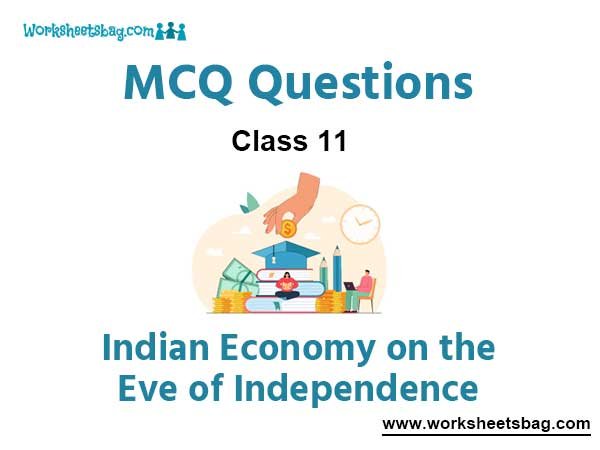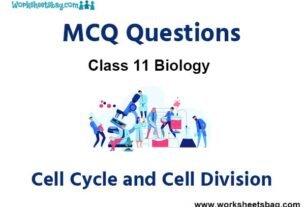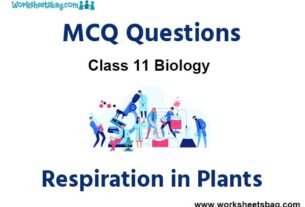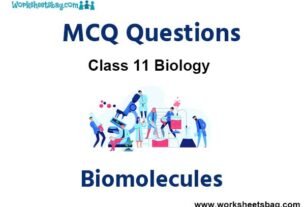Please refer to MCQ Questions Chapter 1 Indian Economy on the Eve of Independence Class 11 Economics with answers provided below. These multiple-choice questions have been developed based on the latest NCERT book for class 11 Economics issued for the current academic year. We have provided MCQ Questions for Class 11 Economics for all chapters on our website. Students should learn the objective based questions for Chapter 1 Indian Economy on the Eve of Independence in Class 11 Economics provided below to get more marks in exams.
Chapter 1 Indian Economy on the Eve of Independence MCQ Questions
Please refer to the following Chapter 1 Indian Economy on the Eve of Independence MCQ Questions Class 11 Economics with solutions for all important topics in the chapter.
MCQ Questions Answers for Chapter 1 Indian Economy on the Eve of Independence Class 11 Economics
Question. What was the overall literacy rate during the British period?
a) 10%
b) 12%
c) 14%
d) 16%
Answer
D
Question. When was India’s first official census operation undertaken?
a) 1850
b) 1869
c) 1881
d) 1921
Answer
C
Question. Which one belongs to the primary sector
a) Fishing
b) Water Supply
c) Exports of agricultural products
d) None of the above
Answer
A
Question. A system of political and social relations between two countries of which one is the ruler and the other is its colony is referred to as.
a) Statesman ship
b) Narcism
c) Both A and B
d) Colonialism
Answer
D
Question. Which industry received the major setback during the colonial rule?
a) Cement
b) Handicraft
c) Paper
d) Iron and Steel
Answer
B
Question. The major contribution to the GDP of the country on the eve of independence was from
a) tertiary sector
b) secondary sector
c) primary sector
d) both primary and secondary sector
Answer
C
Question. Which of the following is the cause of India’s agricultural stagnation and low productivity?
a) Various systems or terms of revenue settlement
b) Low levels of technology and lack of irrigation facilities
c) Lack of resources to investing terracing flood control, drainage and desalinisation of soil
d) All of the above
Answer
D
Question. _________ sector experience growth due to expansion of aggregate area under cultivation.
a) Agricultural
b) Industrial
c) Tertiary
d) Both b) and c)
Answer
A
Question. Indian Economy under British rule was
a) Developed economy
b) Developing economy
c) Underdevloped economy
d) Growing economy
Answer
C
Question. What was the motive of the systematic de-industrializing Indian economy by Britishers?
a) Mere exporter of raw material for Britain
b) Market for finished products made in Britain
c) Forgiving Indians better job opportunities
d) Mere exporter of raw material for Britain and market for finished products made in Britain.
Answer
D
Question. Farming in which crops are produced to provide for the basic needs of the family is called
a) stagnant agriculture
b) subsistence agriculture
c) commercial agriculture
d) None of these
Answer
B
Question. If Britain was the ruling Imperial power, India, was it’s
a) Colony
b) Territory
c) Neighbor
d) Superpower
Answer
A
Question. Which of the following industries were in operation in our country at the time of independence?
a) Cotton and Jute textile industries
b) Iron and steel industries
c) Sugar, cement and paper industries
d) All of these
Answer
D
Question. _________ Industry suffered the most due to de-industrialization
a) Cotton
b) Coal
c) Handicraft
d) Iron Ore
Answer
C
Question. Cotton and jute textile mils begin to take root under British rule in.
a) second half of the nineteenth century
b) beginning of the twentieth century
c) after second world war
d) None of these
Answer
A
Question. Life expectancy at the time of independence was__years.
a) 40
b) 44
c) 43
d) 42
Answer
B
Question. India’s demographic condition on the eve of independence was characterised by
a) High level of literacy, high mortality rates, high life expectancy and high level of poverty.
b) Low level of literacy, low mortality rates, low life expectancy and Low level of poverty.
c) Low level of literacy, low moratlity rates, high life expectancy and high level of poerty.
d) Low level of literacy, high mortality rates, low life expectancy and high level of poverty.
Answer
D
Question. The most predominant sector of the Indian Economy, prior to independence was
a) Agriculture
b) Industry
c) Service sector
d) Trade sector
Answer
A
Question. One of the following was high during the British rule over India
a) Literacy rate
b) Female literacy rate
c) Infant mortality rate
d) Life expectancy
Answer
C
Question. More than half of India’s foreign trade was restricted to
a) China
b) Britain
c) Korea
d) Sri Landa
Answer
B
Question. The Suez canal was opened in .
a) 1853
b) 1921
c) 1911
d) 1869
Answer
D
Question. The foundation of the British Empire in India was laid by the Battle of Plassey fought in.
a) 1757
b) 1857
c) 1763
d) 1747
Answer
A
Question. What percent of India’s population was dependent on agriculture on the eve of independence?
a) 75%
b) 50%
c) 85%
d) 65%
Answer
C
Question. Production of large amount of cash crops for the purpose of export, is termed as
a) Commencement of Agriculture
b) Commercialization of Agriculture
c) Commercialization of Industries
d) The great Indian Diaspora
Answer
B
Question. Birth rate and death rate during the colonial rule was
a) Both birth rate and death rate were high
b) Both birth rate and death rate were low
c) Birth rate was high, while the death rate was low
d) Birth rate was low, while the death rate was high
Answer
A
Question. Which was the year of ‘Great Divide’ for India?
a) 1996
b) 1930
c) 1921
d) 1856
Answer
C
Question. Indian agriculture at the time of independence suffered from
a) Zamindari system
b) Land reforms
c) Allocation of land
d) Land ceiling.
Answer
D
Question. Which year is described as a “Year of Great Divide”?
a) 1931
b) 1921
c) 1941
d) 1911
Answer
B
Question. Which industry was adversely affected due to partition?
a) Silk
b) Cotton
c) Jute
d) Nylon
Answer
C
Question. Prior to Independence, India was an _______economy
a) Agrarian;
b) Industrial
c) Both A and B
d) None of the above.
Answer
A
Question. The Indian economy on the eve of Independence was
a) developed
b) Underdeveloped
c) stagnant
d) b) and c)
Answer
D
Question. The sole purpose of British colonial rule in India was
a) Indian economic growth
b) Reduce the country to being a raw material supplier
c) Expand its modern industry base
d) Social welfare of Indians of economic welfare of Britishers
Answer
B
Question. Read the following statements relating to foreign trade during British rule and choose the correct sequence of these statements.
i) India was an exporter of products like raw silk, cotton, etc.
ii) Britain maintained monopoly control over India’s foreign trade.
iii) India generated a large export surplus
iv) Exports did not result in any flow of wealth into the country
a) i), ii), iii), iv)
b) iv), iii), ii), i)
c) ii), i), iii), iv)
d) iv), i), ii), iii)
Answer
C
Question. Which of the following can be termed as positive contributions of British rule.
a) Self sufficiency in food grain production
b) Better means of transport
c) Shift to monetary economy in India
d) All of the above
Answer
D
Question. The female literacy level was less than __ percent under the British rule.
a) 6%
b) 7%
c) 8%
d) 9%
Answer
B
Question. Foreign travelers defined the finest quality of muslin, a type of cotton textile with its origin in Bengal as.
a) Malmal shahi
b) Malmal Khas
c) Malmal Kapda
d) Both a) and B)
Answer
D
Question. Before 1921, India was under ___ stage of demographic transition.
a) First
b) Second
c) Third
d) None of these
Answer
A
Question. The infant mortality rate under British rule was __ per thousand.
a) 215
b) 214
c) 218
d) 112
Answer
C
Question. Most of the employment was found in _ sector under British rule.
a) industry
b) agriculture
c) services
d) All of these
Answer
B
Read the following statement given below and choose the correct alternative
Question. Assertion (A): Nearly 75 percent of the workforce was engaged in the agriculture sector under British rule.
Reason (R): Bombay and Bengal witnessed a decline in the workforce dependent on agriculture.
a) Both Assertion (A) and Reason (R) are true and Reason (R) is the correct explanation of Assertion (A).
b) Both Assertion (A) and Reason (R) are true and Reason (R) is not the correct explanation of Assertion (A).
c) Assertion (A) is true but Reason (R) is False
d) Assertion (A) is False but Reason (R) is true.
Answer
B
Read the following statement given below and choose the correct alternative
Question. Assertion (A): India’s foreign trade during the colonial period generated a large export surplus. But it came at a huge cost to the country’s economy.
Reason (R): The essential commodities like food grains, clothes, kerosene, etc. were scarcely available in the domestic market. Secondly, the export surplus did not result in any flow of gold or silver into India. Rather, this was used to meet war expenses, payment for imports of invisible items, etc. by the British Government (leading to the drain of India’s wealth)
a) Both Assertion (A) and Reason (R) are true and Reason (R) is the correct explanation of Assertion (A).
b) Both Assertion (A) and Reason (R) are true and Reason (R) is not the correct explanation of Assertion (A).
c) Assertion (A) is true but Reason (R) is False
d) Assertion (A) is False but Reason (R) is true.
Answer
A
Read the following statement given below and choose the correct alternative
Question. Statement 1- India was known for its handicraft industries in the field of cotton and silk textiles
Statement 2- The estimates of Dada bhai Naoroji on income and per capita income were very significant
a) Both are correct
b) Both are incorrect
c) Statement 1 is correct and statement 2 is incorrect
d) Statement 1 is incorrect and statement 2 is correct
Answer
C
Read the following statement given below and choose the correct alternative
Question. Assertion (A): India developed a sound industrial base under colonial rule.
Reason (R): The country’s world-famous handicraft industries declined.
a) Both Assertion (A) and Reason (R) are true and Reason (R) is the correct explanation of Assertion (A).
b) Both Assertion (A) and Reason (R) are true and Reason (R) is not the correct explanation of Assertion (A).
c) Assertion (A) is true but Reason (R) is False
d) Assertion (A) is False but Reason (R) is true.
Answer
D
Read the following statements given below and choose the correct alternative
Question. Statement 1- India had independent economy before the British rule
Statement 2- Production was the main source of livelihood for people under British rule
a) Both are correct
b) Both are incorrect
c) Statement 1 is correct and statement 2 is incorrect
d) Statement 1 is incorrect and statement 2 is correct
Answer
A
Read the following statement given below and choose the correct alternative
Question. Statement 1- The Indian agricultural sector gained prosperity and advancement under the British rule
Statement 2- 100% of the Indian population was engaged in agricultural activities
a) Both are correct
b) Both are incorrect
c) Statement 1 is correct and statement 2 is incorrect
d) Statement 1 is incorrect and statement 2 is correct
Answer
B
Read the following statements given below and choose the correct alternative
Question. Statement 1- India had independent economy before the British rule
Statement 2- Production was the main source of livelihood for people under British rule
a) Both are correct
b) Both are incorrect
c) Statement 1 is correct and statement 2 is incorrect
d) Statement 1 is incorrect and statement 2 is correct
Answer
C
Read the following statement given below and choose the correct alternative
Question. Assertion (A) – The Suez canal is one of the most important waterways in the world
Reason ( R)- Its opening reduced the cost of transportation and made access to the Indian market easier
a) Both assertion and reason are true. Reason is the correct explanation of assertion
b) Both assertion and reason are true. Reason is not correct explanation of assertion
c) Assertion is correct but reason is not
d) Assertion is incorrect and reason is correct
Answer
A
Read the following statement given below and choose the correct alternative
Question. Assertion (A)- Under colonial regime, basic infrastructure was developed
Reason (R)- The motive behind infrastructure development was to make transportation easier.
a) Both assertion and reason are true. Reason is the correct explanation of assertion
b) Both assertion and reason are true. Reason is not the correct explanation of assertion
c) Assertion is true but reason is not
d) Reason is true but assertion is not
Answer
C
Read the following statement given below and choose the correct alternative
Question. Assertion (A): During British rule, India saw a huge drain of wealth.
Reason (R): India generated a large export surplus during the period.
a) Both Assertion (A) and Reason (R) are true and Reason (R) is the correct explanation of Assertion (A).
b) Both Assertion (A) and Reason (R) are true and Reason (R) is not the correct explanation of Assertion (A).
c) Assertion (A) is true but Reason (R) is False
d) Assertion (A) is False but Reason (R) is true.
Answer
B
Read the following statement given below and choose the correct alternative
Question. Assertion (A): India became an exporter of primary products and an importer of finished consumer and capital goods produced in Britain.
Reason (R): Restrictive policies of commodity production, trade, and tariff pursued by the colonial government adversely affected the structure, composition, and volume of India’s foreign trade.
a) Both Assertion (A) and Reason (R) are true and Reason (R) is the correct explanation of Assertion (A).
b) Both Assertion (A) and Reason (R) are true and Reason (R) is not the correct explanation of Assertion (A).
c) Assertion (A) is true but Reason (R) is False
d) Assertion (A) is False but Reason (R) is true.
Answer
A



